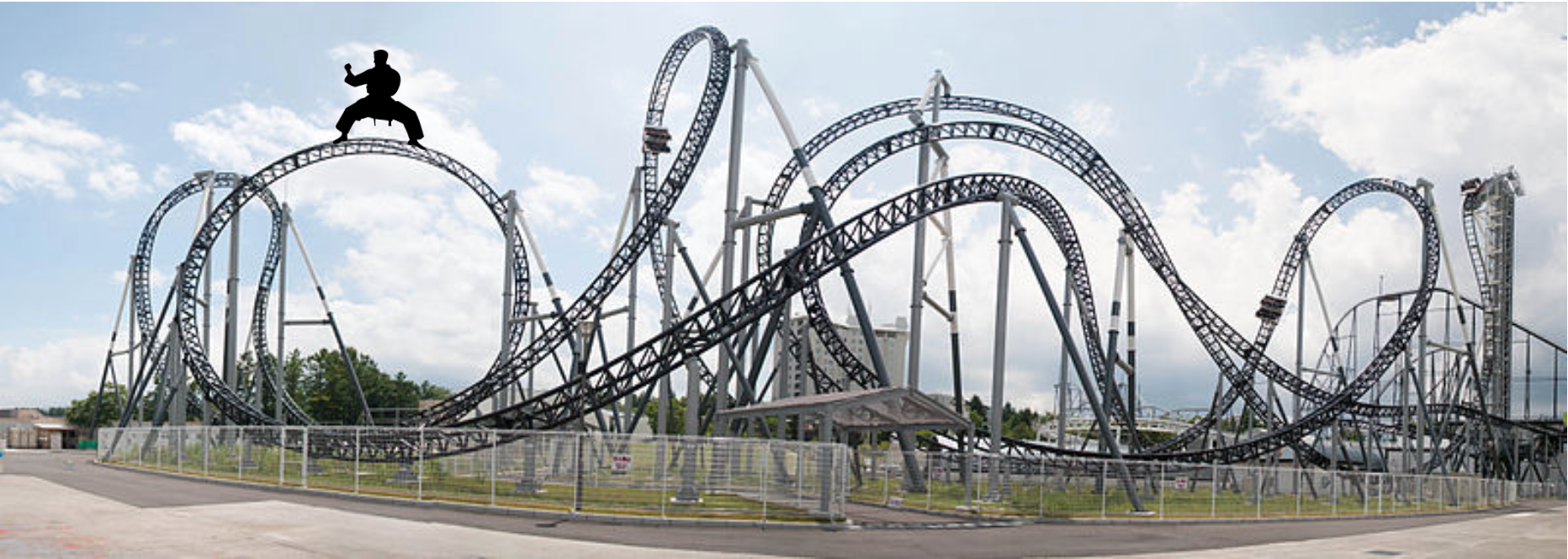The Kata Roller Coaster
/Kata is the essence of karate. It helps us to refine their techniques, develop correct body mechanics, build muscle memory, and train our breathing. It takes years of hard-work, earnest practice, perseverance, and commitment to come anywhere close to mastering these age-old forms, hidden within which lie the fundamental principles and concepts of karate.
Sadly, when we practice the same kata for years on end, it can become easy to stop improving them. But when this happens, we might as well hang up our belts for good; karate is a never-ending path of research and self-improvement, after all.
While our kata never changes (being the ‘kiso’, or ‘foundation’ of all of our training), it certainly can continue to progress and develop for the better, regardless of how many years we’ve been doing it.
But making changes to one’s kata is, by no means, a simple task; and indeed, the longer one’s been practicing for, the more difficult it is to make adjustment and improvements.
Kata performance relies heavily on muscle memory in the execution of most stances and techniques, and so when it comes time to refine those techniques for the better, it can be difficult to make said alterations stick in the long term. Too easy is it to revert back to the old ways when left to one’s own accord to make these improvements.
And the reason is simple: making permanent improvements is difficult! It takes time and conscious thought and effort to implement, during which time, our kata is likely to suffer some “set-backs” as a result.
But these apparent ‘deteriorations’ are, in fact, signs of improvement. Kata practice, and indeed, kata development, is full of ups and downs. This is what I call the “Kata Roller Coaster”.
Kata improvement cannot be represented through a direct ascending line. Rather, it is a combination of inclines and declines that represent improvements and periods of instability during which one works to consciously solidify a new refinement.
The following diagram is my representation of the Kata Roller Coaster:
In this diagram, the rising sections represent phases of growth and improvement; the peaks show new moments of learning, followed by the declines indicating periods of practice and deliberate thought before a new section of growth can begin again.
However, most importantly, despite a perceived ‘slip-back’ in one’s kata as a result of deliberate efforts to make refinements, it is important to note that, as a result of that very effort, the eventual outcome is a more polished kata than before.
Truth be told, the process of kata refinement is probably more like this:

But for the sake of argument, let’s keep it simple.
So in short, it is crucial that, regardless of how long we’ve been practicing for, or doing a kata a particular way, we never become complacent and stop working to enhance that kata. We’re on a life-long path of practice, and if those masters from whom we learn continue to make refinements to their kata, why on earth should we ever stop?
It is important to remember that, with persistence and intentional effort to make desired refinements, any apparent ‘deteriorations’ in one’s kata are, in fact, the first step in enacting permanent improvements.
“An arrow can only be shot by pulling it backward. So when life is dragging you back with difficulties, it means that it's going to launch you into something great. So just focus, and keep aiming”. – Paulo Coelho.
Irrespective of grade, age, years training, or status, we must all ride the Kata Roller Coaster through setbacks and refinements to continue improving not only our kata, but ourselves along the way.
Blake Turnbull copyright ©2020

